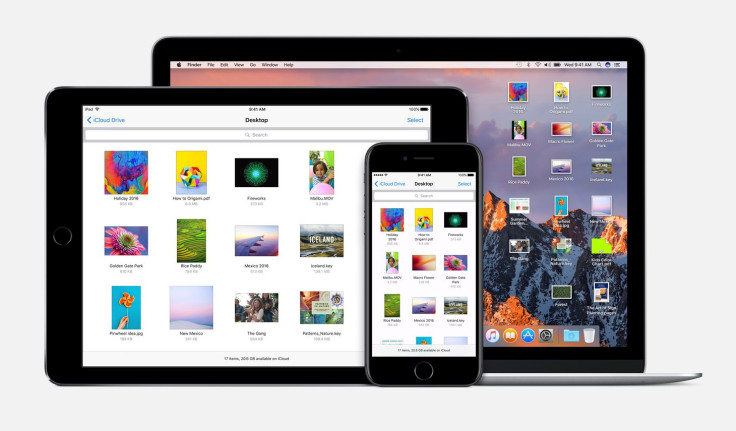How to back up your Mac using Time Machine before updating to macOS Sierra
Make sure your data is safe by taking the right steps before installing.

Apple's new macOS Sierra is finally here and to ready your Mac for the free, major software upgrade IBTimes UK brings you an instruction guide on how to create a backup of your data before you download and install.
The first thing to note is in order to get macOS Sierra, your Mac must be running OS X 10.7.5 or later and your computer must have at least 2GB of RAM and 8.8GB of storage space. Now, for the backing up. Mac owners can use Time Machine, a built-in Apple tool found on OS X, that backs up all files to an external hard drive, which you can use later.
To back up via Time Machine, you will need to enable it first which is done by clicking the switch icon when you open the application, then you'll perform a back up on the local machine and finally restore from that backup. To use Time Machine, you need one of the following external storage solutions:
- External hard drive connected to a USB, FireWire or Thunderbolt port on Mac
- Time Capsule or OS X server on your network
- External hard drive connected to the USB port of an AirPort Extreme base station on your network.
When you connect an external hard drive to the Mac, you should see a prompt on the screen asking if you want to use the drive to back up with Time Machine. At this point click "Use as backup disk". If you select the option called Encrypt backup disk, you will need a password to access the backup.
Sometimes, Time Machine does not ask you to choose a backup disk; if that happens then do the following:
- Go to Time Machine menu then open Time Machine preferences. Alternatively, select Apple menu>> System preferences then click Time Machine.
- Tap Select backup disk
- Select an external hard drive, Time capsule or any other storage solution from the list, then click Use Disk
- Click Add or remove backup disk if you want to add more backups disks, that is after you have chosen a backup disk
How to back up with Time Machine
- Go to Time Machine menu and select back up now — that is if you want to back up now instead of waiting for an automatic backup
- Turn off Time Machine in Time Machine preferences, if you want to stop automatic backup
- To cancel the backup in progress, select Skip this backup or Stop backing up from the Time Machine menu
- If you want to check backup status, use the Time Machine menu.
- To exclude items that you don't want to backup, open Time Machine preferences from the Time Machine menu, then click Options, then click Add+ and select the items to exclude
Note that the backup might take some time, depending on how many files you have. Time Machine backs up the files that you have changed since the previous backup was made.
How to restore from a Time Machine backup
- Go to Time Machine menu, then select Enter Time Machine, or just click Time Machine in the dock
- To find files to restore, use the timeline on the edge of the screen to see the files in the Time Machine backup. You might also use the onscreen up and down arrows to get the contents you changed last time. Use the search field to find a file.
- Select a file and press Space bar to preview the file to ensure this is the one you want to move
- Click Restore or, Control-click the file for other options
Tips: If you want to restore everything in Time Machine, consider using OS X recovery. To copy the files, settings and your OS X user account in the backup to another Mac, use Migration Assistant.
© Copyright IBTimes 2025. All rights reserved.





















